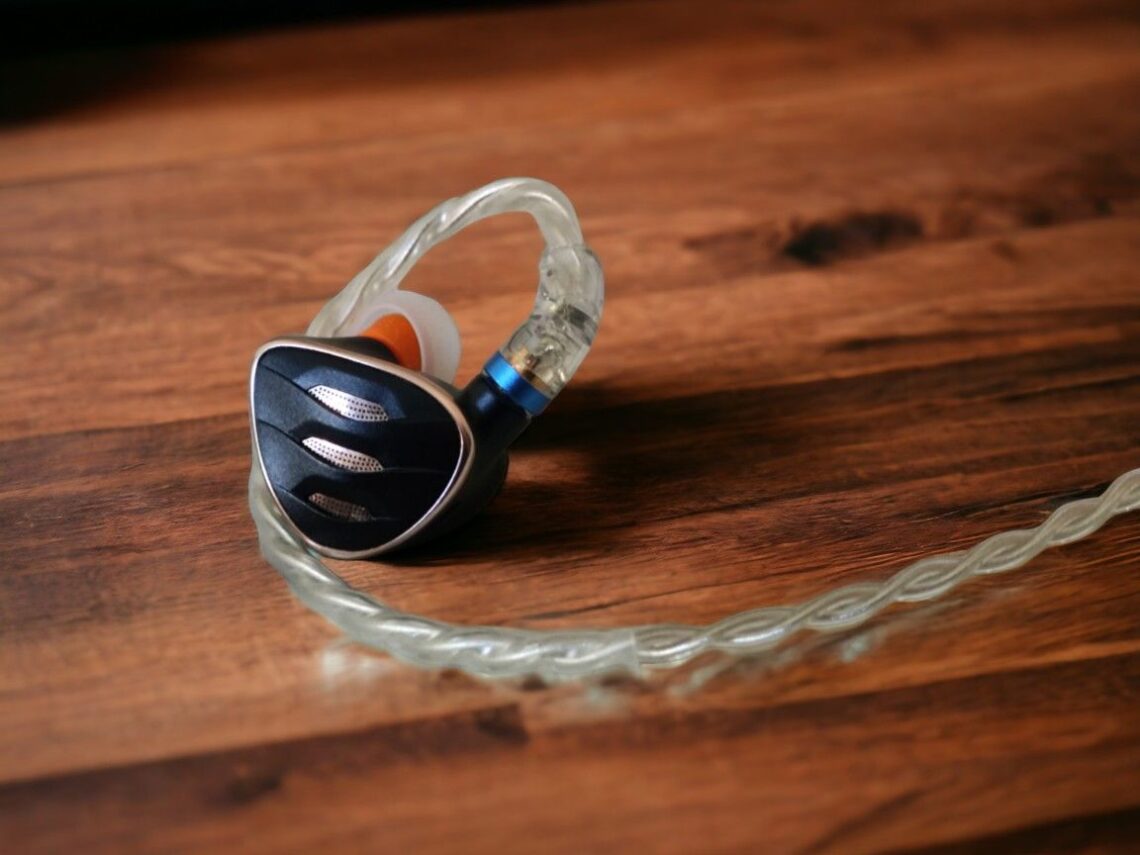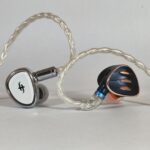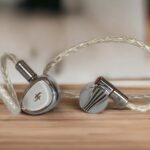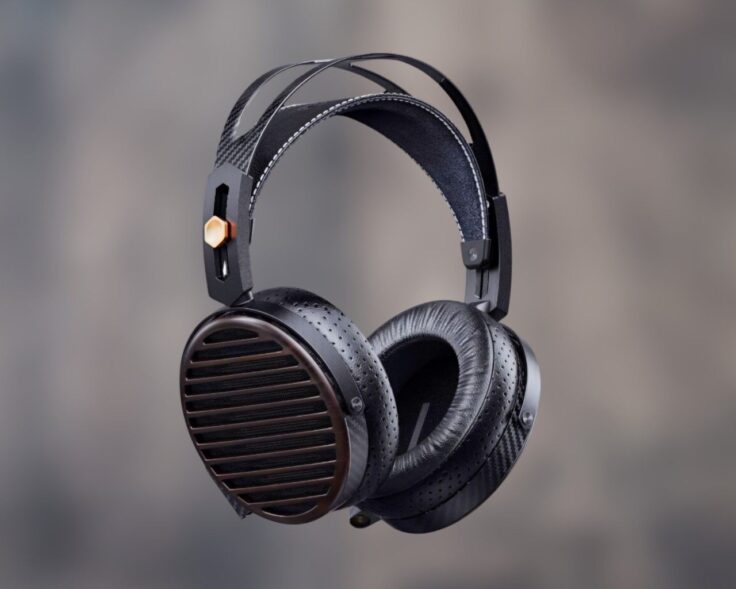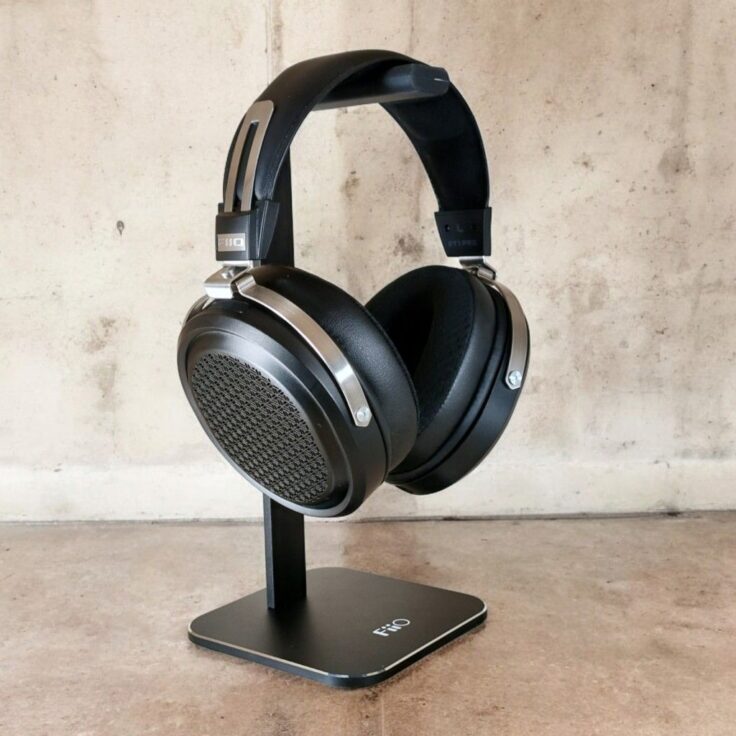The FiiO FH5S sits roughly in the middle of FiiO‘s line-up of hybrid IEMs. Hybrid IEMs use a combination of different types of drivers, in the case of the FH5S, it’s a combination of two dynamic and two balanced armature drivers.
FiiO needs no lengthy introduction. Founded in 2007, they started out making very affordable DAC/Amps and have slowly expanded their product line, focusing on portable audio, including DAPs. They have moved into desktop territory more recently.
FiiO launched their first IEM in 2015, and now they have an impressive selection to offer. They have IEMs in most price classes and with many different designs and driver configurations.
As mentioned, the FH5S has four drivers per side. There’s a 12 mm dynamic driver for the bass and a 6 mm for the midrange, both with a beryllium-coated diaphragm. The treble is handled by two Knowles TWFK-30017 balanced armature drivers. In IEM language, this type of setup is often referred to as a 2DD+2BA quad-driver configuration.
The FH5S comes with tuning options in the form of three tuning switches on the IEM housing. They are supposed to increase the bass, give “clearer” mids, and increase treble, respectively.
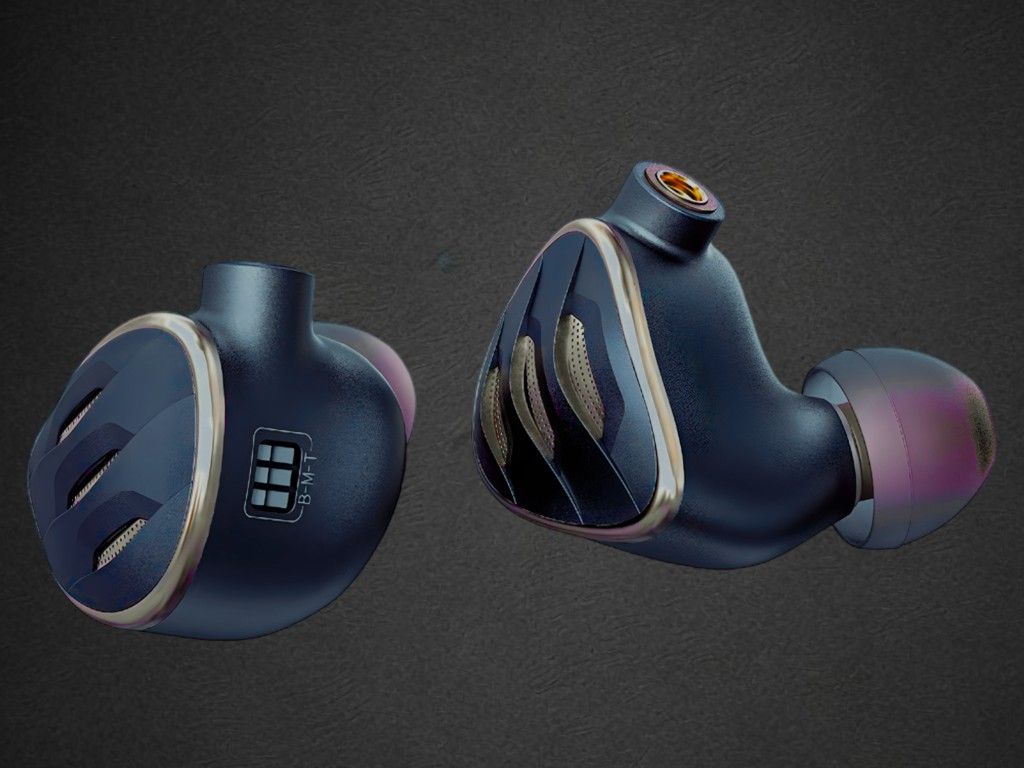
FiiO FH5S SPECIFICATIONS
- Drivers: 12 mm beryllium-plated diaphragm/PU gasket + 6 mm beryllium-plated + Knowles TWFK-30017 compound BA
- Impedance: 40Ω(@1kHz )
- Sensitivity: 106dB/mW
- Frequency Response: 10Hz – 40kHz
- Weight: approx. 8.8g (single ear unit)
- Max Power Input: 100mW
- Earphone connector: MMCX
- Headphone Plug: 2.5/3.5/4.4 mm gold-plated plug
- Cable Length: 120cm
IN THE BOX
- High-purity MMCX cable with interchangeable 3.5 mm, 2.5 mm, and 4.4 mm termination plugs
- HB5 Carry Case
- Bi-Flange Eartips x 1 Pair
- Vocal Eartips x 3 pairs
- Bass Eartips x 3 pairs
- Balanced Eartips x 3 pairs
- Foam Eartips x 3 pairs
- MMCX assist clip
- Cleaning Brush
- Manual
Price on Amazon: FiiO FH5S
Price on Linsoul: FiiO FH5S
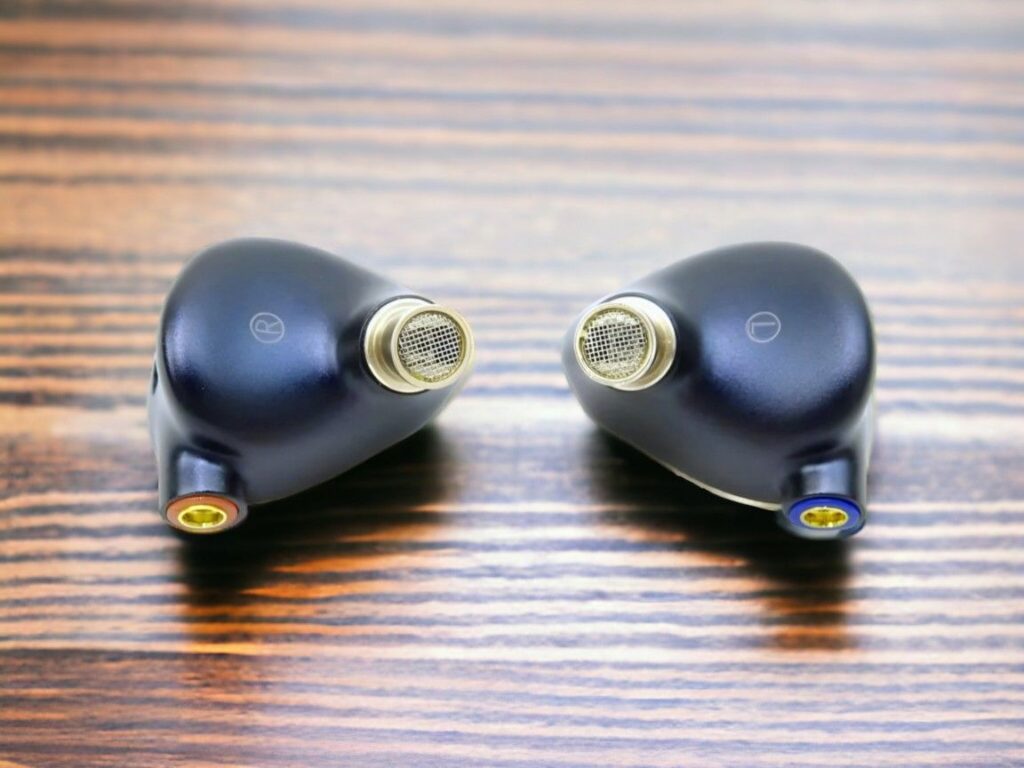
BUILD AND COMFORT
The FiiO FH5S is very well-built and feels like a high-quality earphone. It is very light and fits comfortably in the ear. The housing is made of CNC-machined aluminum-magnesium alloy. It is an acoustically semi-open design with vents on the face plate. This reduces pressure on the ear, and lets the drivers move more freely. The tradeoff is a bit less noise isolation than completely closed designs.
The FH5S comes with a high-purity monocrystalline silver-plated copper cable and is supplied with interchangeable termination plugs (2.5, 3.5, and 4.4 mm). The earphones use MMCX connectors.
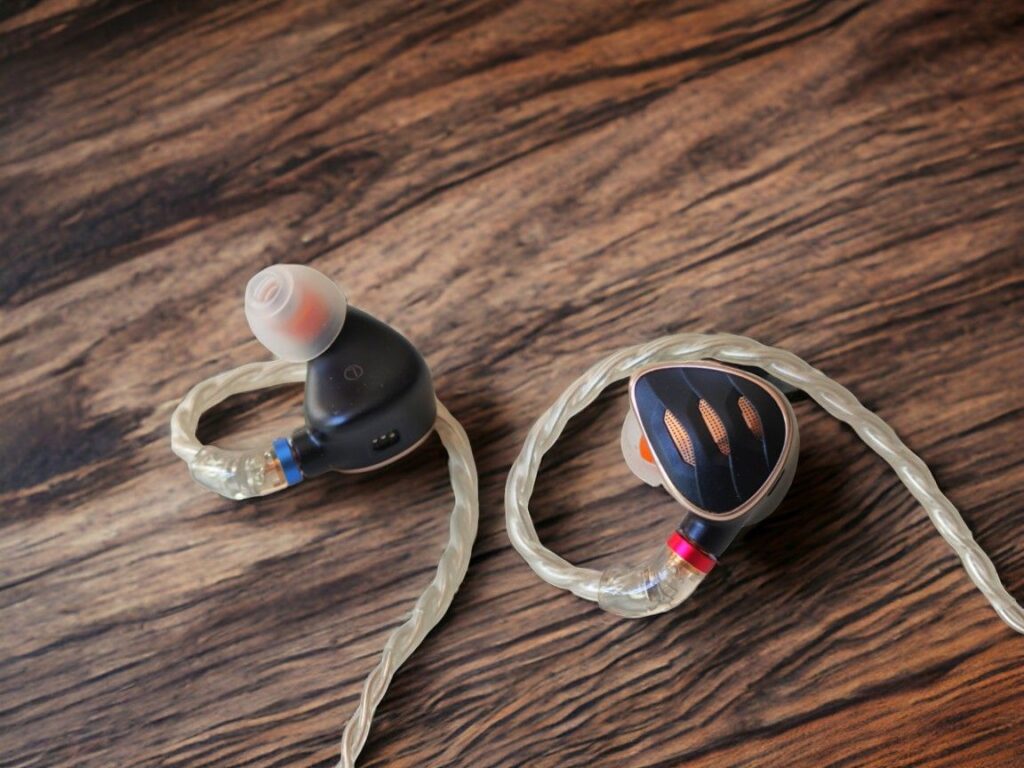
LISTENING IMPRESSIONS
Associated equipment: Topping A90 as amplifier and the RME ADI-2 DAC FS . The RME sounds excellent by itself, but it’s more practical me to use the Topping.
Black Crow by Cassandra Wilson
Starting with the stock tuning, everything is nicely balanced, the instruments are easy to follow, and there’s lots of detail.
Activating the bass switch, however, increases not only the bass but also general macrodynamics; the vocals stand out more, and there’s generally more space between instruments. I need to turn down the volume to compensate for the change in the sound.
With the treble switch activated by itself, there’s just too much treble for me. It makes the sound brighter, but it doesn’t really make it better otherwise. Personally, I don’t need more treble from the FH5S.
According to FiiO, the midrange switch brings the mids down and makes them “clearer.” I don’t know about bringing the mids down, but the female vocals certainly get clearer but also lose their warmth, which is probably because there’s a boost in the upper registers of the vocals.
Activating both the bass and the treble switch sounds quite similar to the bass switch alone, except for the expected increase in treble energy, which is subtle but audible. Personally, I think there’s enough treble with the bass switch enabled alone.
Engaging all switches at the same time reminds me of how the sound is with the switches turned off.
Jambi by Tool
The guitars in the opening are very textured and have a nice, aggressive sound. In stock tuning, the bass is very good but could be more powerful. The vocals are smooth and slightly warm-sounding, but they do not stand out in the mix. Everything blends well together as a whole, at the same time it sounds very tight. I like it.
With the bass switch enabled, the bass is a bit more powerful, as expected. However, the vocals stand out more, and the whole impression is that there is better separation and dynamics.
Engaging the mids-switch didn’t make much difference to the bass and highs, but the vocals sound less natural and smooth.
Having the treble switch enabled does nothing good to this track to put it mildly; it gets bright and harsh.
Sunrise by Norah Jones
Keeping the treble switches on, I find the sound too bright and unnatural also with this acoustic female vocal-focused track.
With the stock tuning, Norah Jones is bright-sounding enough for me. The presentation is generally quite smooth yet detailed. It is well balanced, and the vocals stand out nicely.
In The Mountains by Espen Eriksen Trio
In the stock setting, the bass is quite powerful and well defined, with good texture and extension. The instruments are well balanced; nothing dominates. There’s lots of detail, and individual instruments are easy to follow, although they blend nicely together as a whole.
Activating the bass switch, the bass becomes almost too strong, but everything sounds very good.
Fading Sorrow by Marcin Wasilewski Trio
This sounds very nice in stock setting. It is very smooth and detailed. There’s a good sense of warmth, but in a dry way – Dry warmth.
By engaging the bass switch, there is more warmth and the sound becomes less dry. The midrange is fuller, especially the saxophone. The bass is a bit richer, but it’s the midrange that is most affected on this track.
Sit Down, Stand Up by Radiohead.
With the bass switch engaged, this sounds good. The bass is just right, and the sound is slightly warm. In the stock setting, however, the sound gets a bit dryer, and I miss the warmth and extra bass presence that was there with the bass switch activated.
Midnight City by M83
Also here, I prefer the bass switch to be activated. It has a fuller sound with a warmer touch and, of course, more low end. It sounds quite smooth and slightly laid-back in a nice way.
Like Suicide by Soundgarden
With the bass switch activated, there is more than enough low-end rumble. Actually, since I am no basshead, I prefer the stock tuning here. In both cases, the bass has good quality, with nice definition and texture. Guitars are crisp, but not to an unpleasant degree at all. It’s a nice presentation, especially with the stock tuning.
Young Vivaldi Violin Concerto RV813 buy Ensemble Modo Antiquo
With the stock setting, it’s good, but the strings sound especially nice when I have the bass switch activated. It gives a good dose of warmth to the strings.
Follow by BMX
This is a jazz improv track that really showcases the spatial capabilities of an earphone, and I am not disappointed in the FH5S. Every instrument, every tone, and every little tap on the cymbal are positioned precisely in space.
Britton’s “Variations of a Theme of Frank Bridge: Wienerwaltz” by The Norwegian Chamber Orchestra
This is also a track that demands high-quality spatial capabilities to sound its best, and the FH5S delivers. It sounds very nice with the strings; they’re nicely textured and nuanced.
With the bass switch activated, there’s more body but less spatiality.
Mahler’s Symphony No. 2 III by Paavo Järvi
Another classical piece that is quite challenging, very complex, and has a very large dynamic range. The FH5S handles these challenges very well, and it’s a joy to listen to this track.
Engaging the bass switch makes things warmer but also a bit thicker; some of the spatial qualities are lost. I prefer this piece with the bass switch off.
Spontaneous Compositorius by Thomas Agergaard
This sounds great with the FH5S and is rendered with an extremely spacious vibe. With the bass switch enabled, the FH5S still sounds very wide and open, and has an even more wonderful bass and midrange presence. The treble-intensive percussion is really nice, and the saxophone is beautifully rendered.
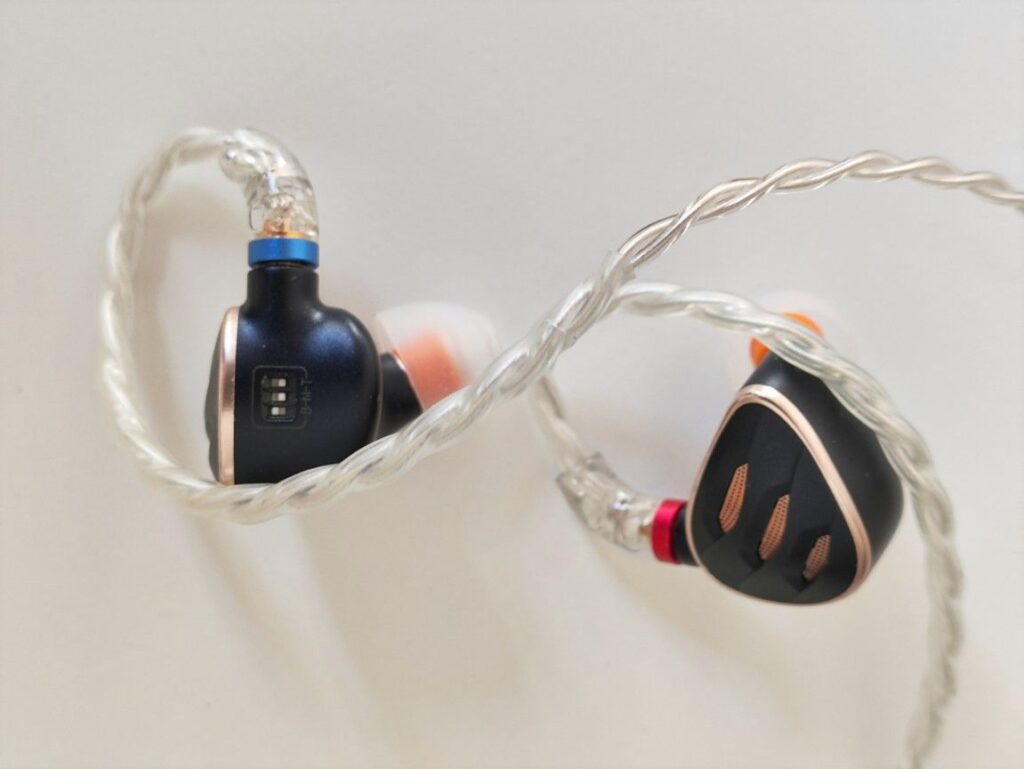
COMPARISONS
ORCHESTRA LITE vs. FiiO FH5S
The Orchestra Lite and FH5S are both quite neutrally tuned, but they present the music a bit differently. The FH5S has a dry warmth to its sound and excels in areas such as dynamics, texture, imaging, and instrument separation. The Orchestra Lite is not far behind in these aspects but has a more liquid, rounded presentation that’s very appealing.
Activating the bass switch on the FH5S makes the mid-range warmer and more organic, and it increases the bass quantity. However, the Orchestra Lite still has a more liquid sound, but the bass switch takes the FH5S in that direction. It also increases the bass, of course. However, since the FH5S has a bit more bass to begin with, one could wish for a bass boost switch on the Orchestra Lite, too.
For much classical and acoustic music, the Orchestra Lite is absolutely stunning, but for rock, pop, electronic music, etc, the Orchestra Lite might have too little bass for many, and the FH5S is a safer bet. Personally I would have a hard time choosing between the two.
KIWI QUINTET vs. FIIO FH5S
The Quintet is, as the name suggests, a 5-driver IEM sporting four driver types. There’s a DLC dynamic driver, two balanced armature drivers, a planar magnetic driver, and a piezoelectric bone conductor. It needs a bit more amp juice than the FH5S.
The Fiio FH5S and the Kiwi Ears Quintet have a lot of good things in common. They’re quite neutral-sounding, with a balanced sound signature. They both have a wide and open sound stage with good imaging. There’s lots of detail across the board, but especially the bass, which stands out as quite exceptional on both. Dynamics are good; there are great macrodynamics (energy punch and slam) as well as microdynamics (the articulation of small details and subtleties).
When it comes to the differences, the Quintet is somewhat warmer sounding and slightly thicker, the FH5S with the stock tuning is slightly “clearer”-sounding. The Quintet is a tad more organic in its character, the bass might be a tad fuller.
Activating the bass switch on the FH5S changes the picture – as always. It does not only increase the bass but also makes the slightly dry character of the midrange disappear, making it a warmer and bassier-sounding earphone than the Quintet.
In general, I personally prefer the Quintet versus the FH5S in stock setting, with the bass switch enabled, choosing is a lot more difficult.
Full comparison here
It you want to purchase the Quintet, support us by using these links:
SIMGOT EA1000 vs. FIIO FH5S
The EA1000 is a 10 mm single-dynamic driver earphone with interchangeable tuning nozzles. I compared these two earphones with the tuning switches of the FH5S set to 0 and the EA1000 with the brass nozzles (medium bass).
They have several similarities as well as notable differences. The tonal balance is not very far apart. I like the sound signatures of both. Neither are too bassy, both have a nice presence in the midrange, and both have detailed highs that aren’t too bright. They have a wide and open soundstage with good imaging.
They do, however, have different ways of presenting the music. The FH5S has a dry warmth to its sound and excels at conveying textures. The EA1000 is more organic and liquid, yet still highly detailed.
However, when activating the bass switch on the FH5S, it becomes much warmer, not only in the bass but also in the midrange. The midrange sounds very close to the EA1000, the bass is fuller than that of the EA1000. The FH5S changes a lot. Actually, with the bass switch, the FH5S generally sounds warmer than the EA1000, although the EA1000 still sounds more organic and liquid.
Full comparison here
It you want to purchase the EA1000, support us by using these links:
SIMGOT EA2000 vs. FH5S
The FH5S sounds less energetic and gives off a smoother vibe. The bass is very controlled and similar to that of the EA2000. The midrange has a bit more presence but can tend to come off as a bit dry in the stock setting. This also goes for the treble, which is not as liquid as that of the EA2000.
However, the FH5S’s bass boost switch really makes a positive impact; it enhances midrange warmth and removes the aforementioned dryness. What’s even better is that it tends to increase dynamics. Still, however, the EA2000 is more punchy and has better dynamic range – along with more precise imaging.
To conclude, I must admit that the EA2000 has something extra for me. It’s more magical. That being said, there’s plenty of music where I find my hand reaching for the FH5S instead, especially when the bass switch is activated.
Support us by getting the EA2000 here:
- Linsoul: Simgot EA2000
- Amazon: Simgot EA2000
LETSHUOER S12 PRO vs. FH5S
The S12 PRO is a planar magnetic single-driver earphone and has, for many, been the reference of its kind in the price class of 100–200 USD since it came out. It is generally a very well-tuned and well-performing IEM, and it is especially known for its superb bass quality.
Comparing it to the FH5S in the stock setting, I find that the bass is of very similar quality, but the FH5S is more refined on the mids and highs, with better imaging and instrument separation. They share the same “dry warmth”-timbre.
With the bass switch activated, the FH5S becomes warmer and bassier-sounding than the S12 PRO, with a more organic timbre.
It you want to purchase the S12 PRO, support us by using these links:
FiiO FD5 vs. FH5S
FiiO’s FD5 is a single dynamic driver earphone, and offers a distinctly different listening experience than the FH5S. The FD5 emphasizes warmth, smoothness, and a lush sound with prominent bass and midrange. In comparison, the FH5S delivers crisper highs, more textured midrange, and a cleaner bass with less emphasis.
FD5 has a much more laid back treble. It is smoother and more liquid. In the midrange, the FD5 shines with its natural and musical quality, whereas the FH5S sounds thinner and more textured even when the bass switch is enabled.
When it comes home to the lowest regions, the FD5 offers a meatier, warmer, and slightly looser bass, while the FH5S is tighter, more defined, and textured, with less bloom.
The FD5 provides an intimate soundstage, whereas the FH5S has a more open, airy, and spacious sound. However, I find the FD5 to give a better sense of depth and to have better imaging in general.
The FD5 presents detail in a liquid and organic manner, while the FH5S offers a drier, crisper and more textured rendering. The FD5 excels in dynamics and has a richer, organic timbre, the FH5S offers more texture and a crisper, more articulate sound.
AMPLIFICATION
Most of my listening and the comparisons have been done with my desktop rig, mostly the Topping A90 amp and the RME ADI-2 DAC FS. The ADI-2 sounds excellent by itself also, I must add.
The portable options I have tested are the following:
POCO F5 phone with headphone jack. This sounds quite good, but there’s a very noticeable loss in clarity and dynamics compared to the desktop rig. However, it still sounds pretty nice.
The xDuoo Link2 Bal sounds very good. Much better than the phone and surprisingly close to the desktop rig.
The THX Onyx is a step down from the Link2, even though it’s more expensive.
Finally, the Dragonfly Cobalt is excellent and even better than the Link2.
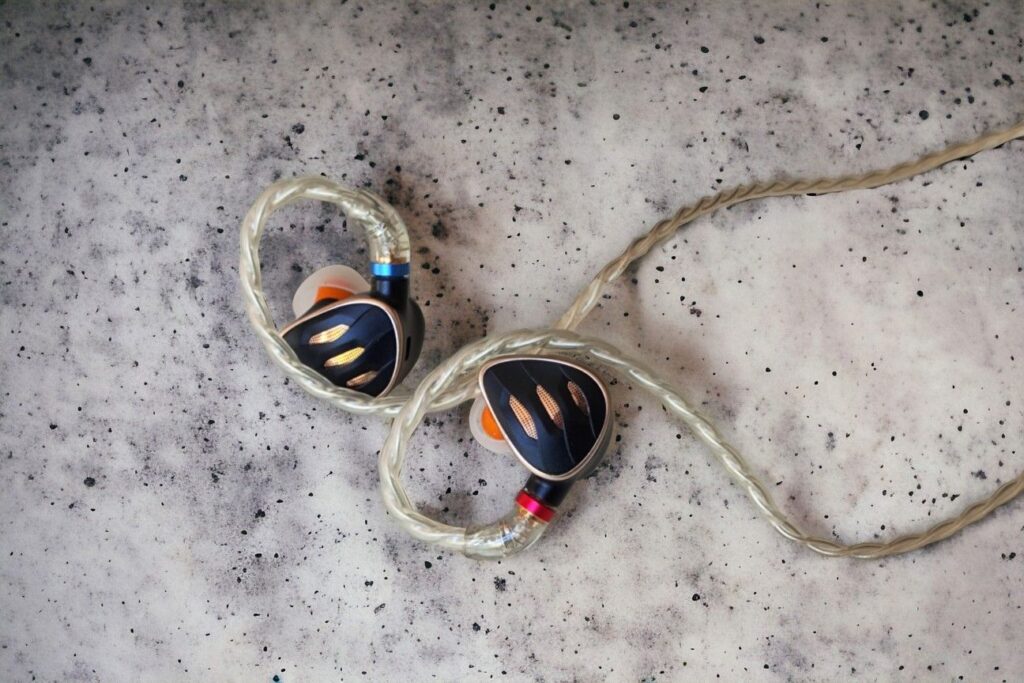
WRAPPING IT UP
Sound Signature
In its stock tuning configuration, with all switches turned off, I do find that this earphone has a quite neutral and rather smooth but detailed sound signature. Of all the possible combinations of the three tuning switches, I personally only cared for the bass switch. It certainly has some very positive effects. Not only does it enhance the bass quantity, but often more importantly, it makes the midrange warmer and more pronounced. I also experienced enhanced macrodynamics with the bass switch on.
Treble
The treble is clear and crisp, but not overly bright in the stock position. With the bass switch on, the treble is less bright and feels warmer. There’s a slight dryness to the timbre in the stock tuning, but I find that to mostly go away with the bass switch activated.
Midrange
The midrange is very nice; there’s lots of detail and texture. It’s not the warmest and fullest midrange I’ve heard, and in the stock setting, it sometimes comes off as a bit dry, as with the treble. I have often used the phrase “dry warmth”. However, the dryness is never an issue with the bass switch activated, which makes the midrange sound fuller, warmer and more organic.
Bass
The bass quantity in stock tuning is quite neutral, and the response sounds and feels pretty even. The quality of the bass is very good; there’s lots of definition and texture. Engaging the bass switch increases the bass quantity, but not to an exaggerated level. I find the switch to be very well implemented.
Soundstage and Imaging
The FH5S has an airy and open sound stage. Imaging is good, but I find that image depth is a bit lacking in comparison to the best. Individual instruments are easy to identify, but I do not always find the space between them to be the blackest. However, when not comparing it directly to even better IEMs, it’s excellent.
Detail, Dynamics, and Timbre
The general level of detail is very high, as to be expected in this price range. Especially the bass is impressive. Dynamics are good in the stock switch setting, and when I activate the bass switch I find the dimensions to get even better .
When it comes to the timbre, I often find the midrange and treble to sound a bit dry with the stock tuning (switches deactivated). Even though it’s a little bit dry sounding, the midrange is slightly warm, giving it a “dry warmth”.
With the bass switch activated, the midrange gets a more organic timbre, so does the bass. The treble also gets a bit less dry and smoother sounding.
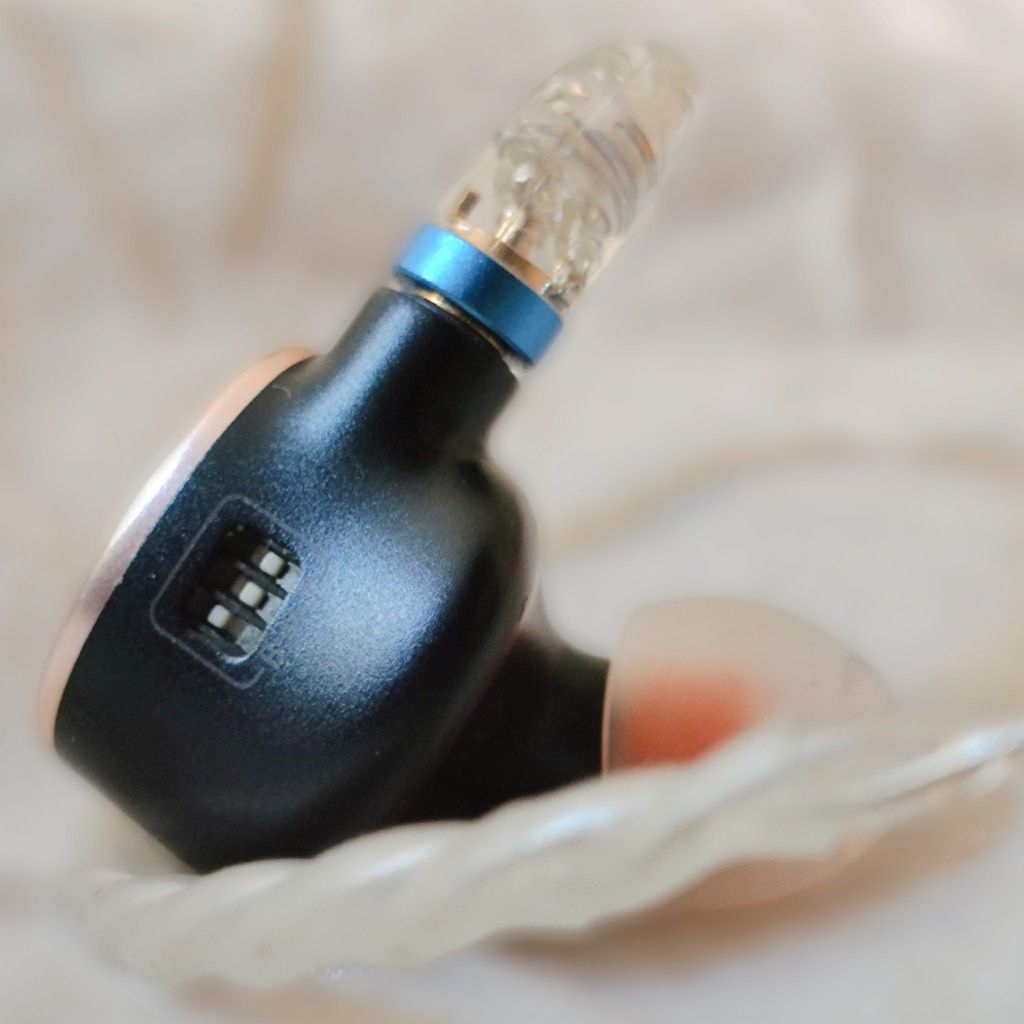
Tuning Switches
Of the three tuning switches, I personally only find the bass switch to make the sound better, and that switch does a lot of good. It increases the bass quantity and gives better dynamics in the bass and mids. Further, it makes the general sound, and especially the midrange, warmer and more organic. All of this without reducing detail-level or significantly affecting the soundstage and imaging.
I thus find that the FH5S has two good tunings available: the stock tuning, with all switches off, and the “extra bass” tuning, with the bass switch activated and the other two off. These two sound profiles are available with a 2-second operation, given you have the right tool, like a paperclip or toothpick.
I wish there’d been a midrange switch that did the same to the midrange as the bass switch, but without the increased bass.
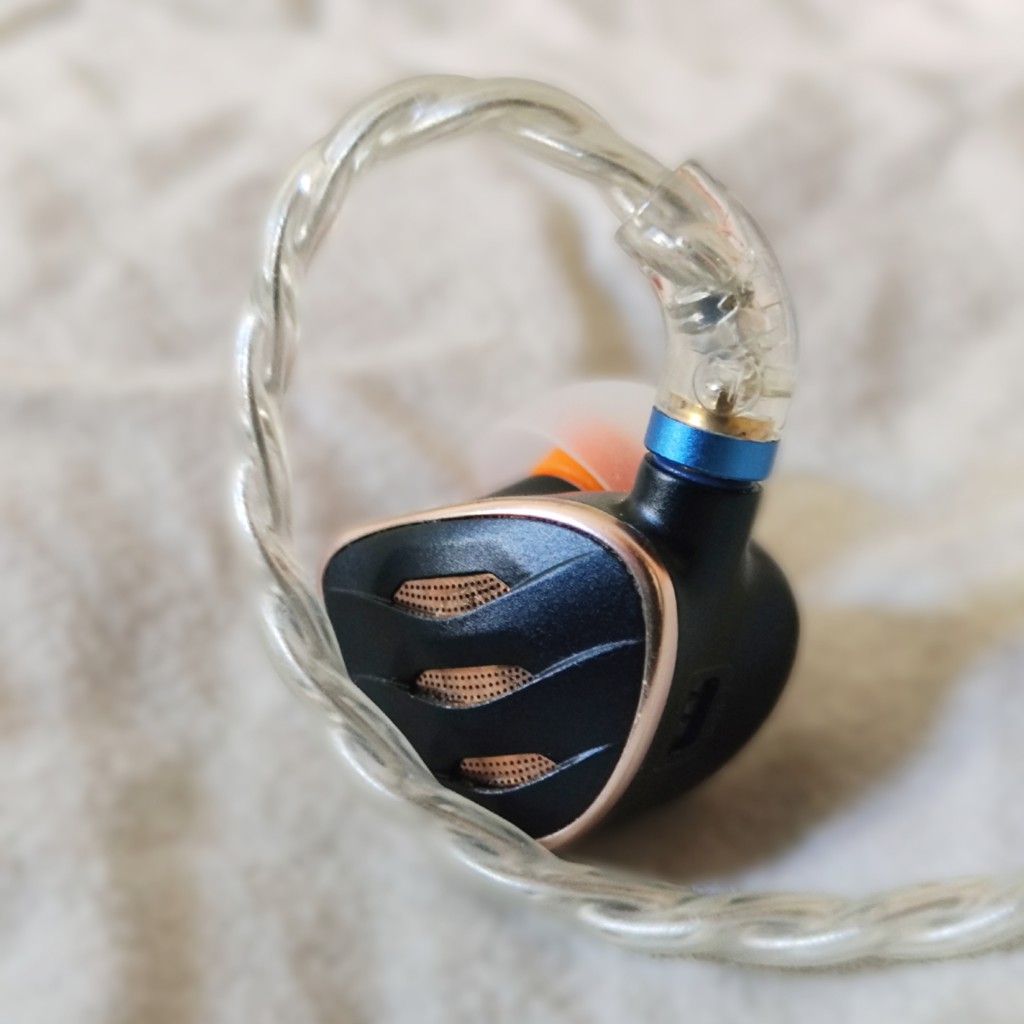
CONCLUSION
The FiiO FH5S is a well-tuned IEM with a neutral sound signature and a high detail level. The bass is especially impressive.
Of the three tuning switches, I find the bass switch to be the best implemented. It gives a fuller and warmer sound along with better macrodynamics – all without compromising on details or soundstage.
The build quality and accessories are too notch, and the FH5S is lightweight and comfortable. All in all, a great offering from FiiO.
Support us by getting the FH5S here:
Any purchase you make on Amazon or Linsoul with any of our affiliate links will give us a small provision at no cost to you.
We only get a provision for items that are not returned, so there’s no incentive for us to recommend something that’s not good.
Linsoul : Headphones, Earbuds, Wireless Earbuds, Desktop DAC/AMP, Portable DAC/AMP, Digital Audio Players,
Amazon: Headphones, IEMs, Headphone Amplifiers, Home Audio or Anything else.
.
If you enjoyed this article or other content on The Headphoneer, you might consider leaving a small donation to keep this website up and running. No donation is too small. Thanks for supporting us!
If you like our work please follow us on Instagram, Facebook and Twitter , it will help us grow. Sharing is caring 🙂


